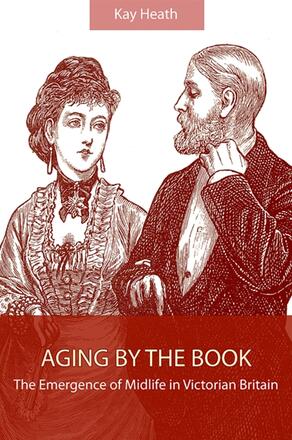
Aging by the Book
The Emergence of Midlife in Victorian Britain
Alternative formats available from:
Uncovers the origins of midlife anxiety in Victorian print culture.
Description
Aging by the Book offers an innovative look at the ways in which middle age, which for centuries had been considered the prime of life, was transformed during the Victorian era into a period of decline. Single women were nearing middle age at thirty, and mothers in their forties were expected to become sexless; meanwhile, fortyish men anguished over whether their "time for love had gone by." Looking at well-known novels of the period, as well as advertisements, cartoons, and medical and advice manuals, Kay Heath uncovers how this ideology of decline permeated a changing culture. Aging by the Book unmasks and confronts midlife anxiety by examining its origins, demonstrating that our current negative attitude toward midlife springs from Victorian roots, and arguing that only when we understand the culturally constructed nature of age can we expose its ubiquitous and stealthy influence.
Kay Heath is Associate Professor of English at Virginia State University.
Reviews
"Heath adopts a sophisticated approach to the cultural construction of midlife … Her consideration of the subjective aspects of ageing adds to our understanding of midlife." — Victorian Studies
"…Aging by the Book … makes a persuasive case that it was the Victorian age that solidified modern understandings of what it means to be middle-aged … Heath, in a book that is divided between careful and thorough cultural history and literary readings, and that will likely prove helpful and thought-provoking to a wide range of Victorianists, sets out to show why and how the no-longer-excluded middle between youth and senior status comes about." — Nineteenth-Century Literature
"…this cultural history of midlife's invention also offers a new approach to nineteenth-century fiction: a literary history of aging heroes and heroines." — Studies in the Novel
"By exploring the origins of a 'midlife decline ideology,' Aging by the Book challenges readers to think more critically about the power of ageism in the present, making it an important read not only for Victorian scholars but for anyone interested in age studies." — Journal of British Studies
"Heath does indicate, in her close and subtle reading of the texts she has chosen, that questions of age, love, and desire were complex and fluctuating, and that there was a degree of flexibility within certain limits of age and status." — Nineteenth-Century Gender Studies
"…Heath's treatment of the marriage plot raises interesting questions about age and Victorian realism." — CHOICE
"From the shrewd situating of middle age as the liminal rather than central stage between youth and age to insightful rereadings of the marriage plot in relation to narratives of decline, Kay Heath's Aging by the Book is a significant contribution to both age studies and Victorian studies." — Teresa Mangum, author of Married, Middlebrow, and Militant: Sarah Grand and the New Woman Novel